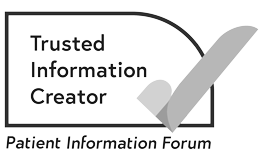Biosimilar cancer drugs
What is a biosimilar drug?
A biosimilar drug is a copy of a biological drug. Biological means a drug that involved a living source. For example, the drug was produced using cell lines that originally came from an animal. Many types of targeted therapy and immunotherapy cancer drugs are biological drugs.
A biosimilar drug may not be identical to the original biological drug. But tests show that it is highly similar and has the same effect when given as a treatment.
Are biosimilars cheaper?
Cancer biosimilars cost less to make than the original biological drug. So they are usually cheaper.
When a drug company first develops a new biological drug, they are the only ones allowed to make and sell the drug for a number of years. This helps them earn back the cost of developing the drug. After that time, other companies are allowed to make and sell their own versions of the drug (biosimilars).
Are biosimilars safe?
A biosimilar is only available as a treatment if tests show:
- it is highly similar to the original drug
- it is as safe and effective as the original drug.
The biosimilar drug must be made to the same quality standards. Doctors must use it in the same way as the original drug.
Biosimilars in cancer treatment
There are many biological drugs used to treat cancer. But a lot of these are still only made by the drug company that first developed them. This means there are not very many cancer biosimilars.
This is likely to change over time as more biosimilars become available. Currently, cancer drugs that have biosimilar versions include the following:
- bevacizumab – this is also called Avastin®, and is available as biosimilars called Alymsys®, Aybintio®, Oyavas®, Vegzelma®, Zirabev®.
- trastuzumab – this is also called Herceptin, and is available as biosimilars called Zercepac®, Herzuma®, Kanjinti®, Ontruzant®, Trazimera®.
- rituximab – this is also called MabThera®, and is available as biosimilars called Rixathon®, Ruxience®, Truxima®.
Related pages
About our information
This information has been written, revised and edited by Macmillan Cancer Support’s Cancer Information Development team. It has been reviewed by expert medical and health professionals and people living with cancer.
-
References
Below is a sample of the sources used in our lymphoma information. If you would like more information about the sources we use, please contact us at informationproductionteam@macmillan.org.uk
Follows GA, Barrington SF, et al. Guideline for the first-line management of Classical Hodgkin Lymphoma — A British Society for Haematology guideline. Br J Haematol, 2022; 197, 558– 572. [accessed April 2024].
Fox CP, Chaganti S, McIlroy G, et al. The management of newly diagnosed large B-cell lymphoma: A British Society for Haematology Guideline. Br J Haematol. 2024; 204(4):1178–92. [accessed April 2024].
McKay P, Fielding P, et al. Guidelines for the investigation and management of nodular lymphocyte predominant Hodgkin lymphoma. Br J Haematol, 2015; 172, 32-43. [accessed April 2024].
McNamara C, Montoto S, et al. The investigation and management of follicular lymphoma. Br J Haematol, 2020; 191, 363-381. [accessed April 2024].
National Institute for Health and Care Excellence. Non-Hodgkin’s lymphoma: diagnosis and management. NICE guideline [NG52]. Published: 20 July 2016. Last update Oct 2021. [accessed April 2024].
Date reviewed

Our cancer information meets the PIF TICK quality mark.
This means it is easy to use, up-to-date and based on the latest evidence. Learn more about how we produce our information.
The language we use
We want everyone affected by cancer to feel our information is written for them.
We want our information to be as clear as possible. To do this, we try to:
- use plain English
- explain medical words
- use short sentences
- use illustrations to explain text
- structure the information clearly
- make sure important points are clear.
We use gender-inclusive language and talk to our readers as ‘you’ so that everyone feels included. Where clinically necessary we use the terms ‘men’ and ‘women’ or ‘male’ and ‘female’. For example, we do so when talking about parts of the body or mentioning statistics or research about who is affected.
You can read more about how we produce our information here.





